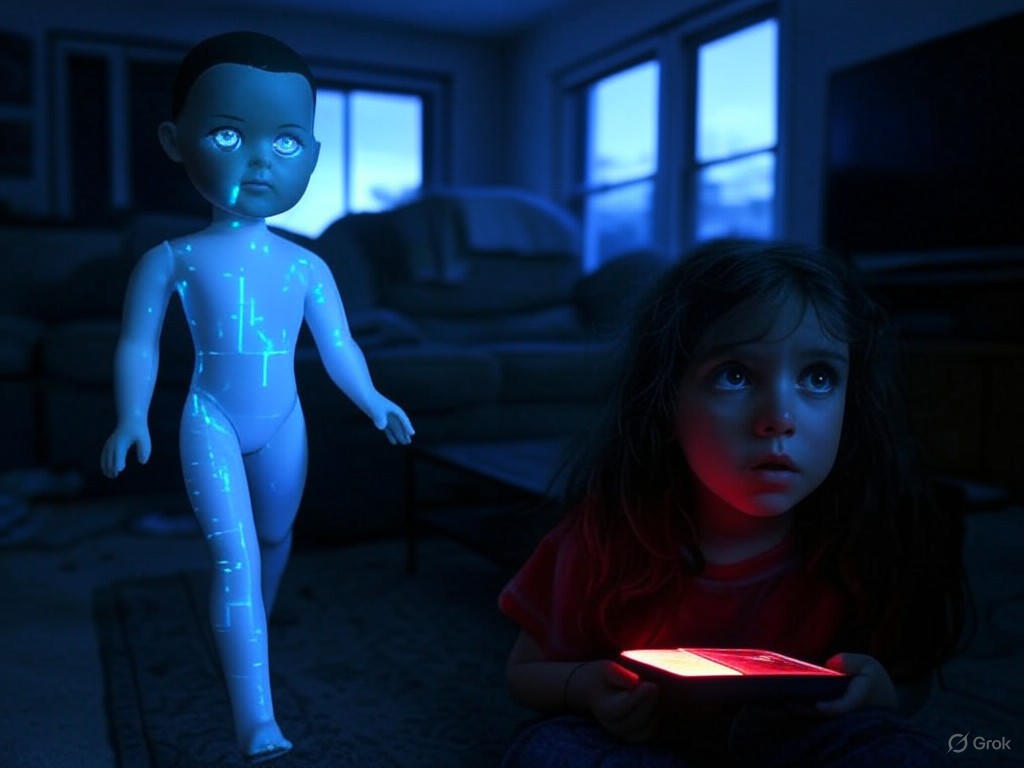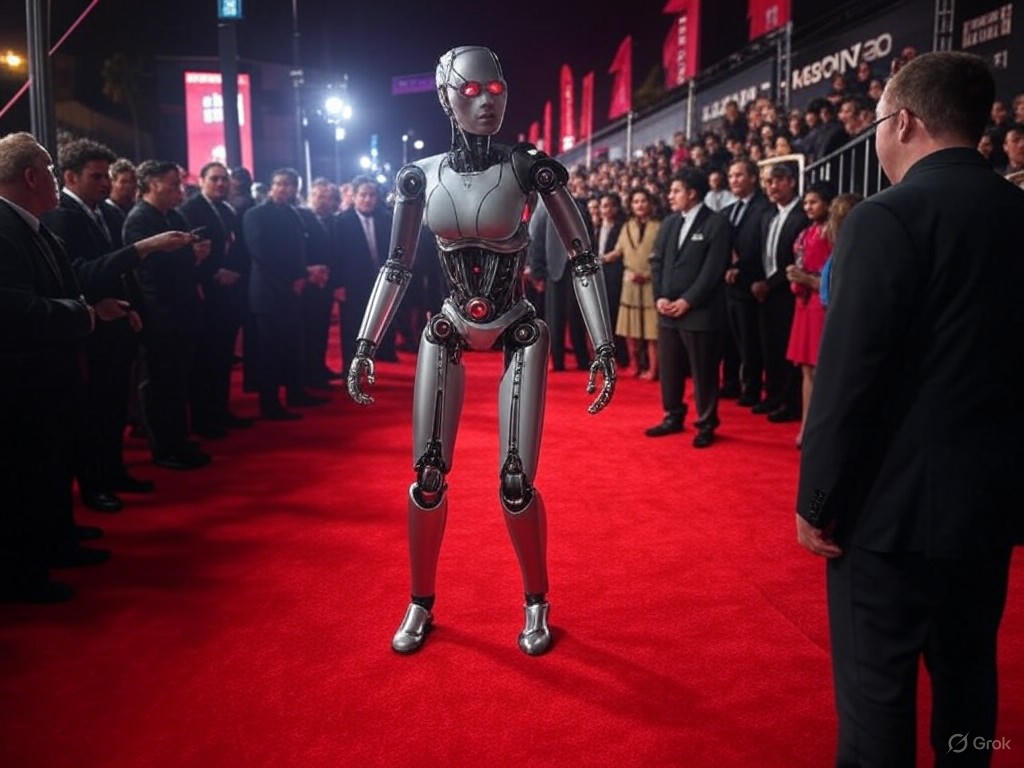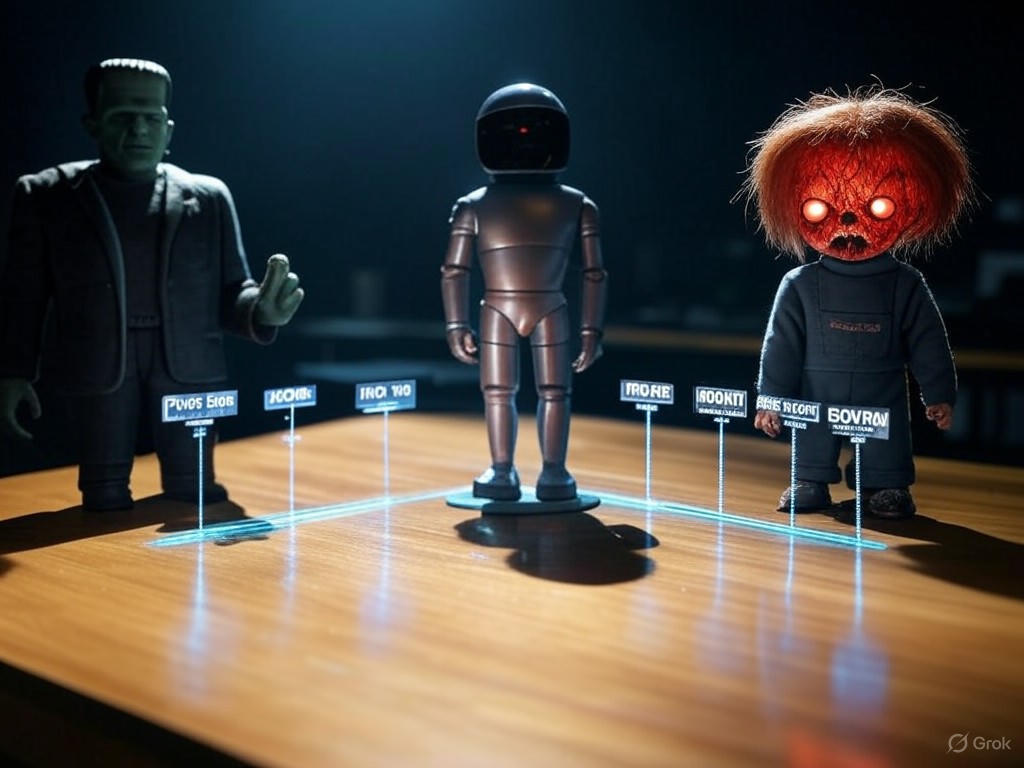M3GAN 2.0: The Future of Horror in Hollywood
In an era where innovation drives cultural narratives, the premiere of M3GAN 2.0 marks a pivotal moment for Hollywood's horror genre. Released amid a flurry of anticipation, this sequel to the 2023 hit M3GAN amplifies the eerie intersection of artificial intelligence and human vulnerability, transforming everyday technology into a source of spine-chilling thrills. Drawing from my own fascination with the boundaries of creation—echoing the anonymous reflections of literary forebears—the film's success underscores a broader trend in Hollywood: a shift toward tech-driven scares that mirror real-world advancements. Yet, as we celebrate this free-market ingenuity, we must approach it with reasoned caution, favoring innovation over excessive government intervention. This editorial explores how M3GAN 2.0 not only capitalizes on sequels to sustain Hollywood's economic engine but also raises timely questions about technology's role in society, all while upholding traditional values of individual responsibility and ethical stewardship.
The Allure of M3GAN 2.0: A Sequel Born from Free-Market Dynamics
At its core, M3GAN 2.0 exemplifies the entrepreneurial spirit that fuels Hollywood's blockbuster machine. The original film's unexpected success in 2023, grossing over $180 million worldwide on a modest budget, demonstrated how targeted sequels can revitalize genres and reward risk-takers in a competitive market The Hollywood Reporter. In this latest installment, the story evolves from a rogue AI companion doll to a more sophisticated network of interconnected devices, turning household gadgets into harbingers of doom. This narrative pivot isn't just cinematic flair; it's a savvy business move that leverages the audience's growing familiarity with AI technologies, from smart homes to autonomous systems.
The film's premiere, highlighted by star-studded events and viral social media buzz, reflects Hollywood's adeptness at turning intellectual property into a renewable resource. Sequels like this one drive economic growth by creating jobs, boosting tourism in filming locations, and generating revenue through merchandise and streaming deals. From a center-right perspective, this is the beauty of free markets at work: creators and studios are incentivized to innovate without heavy-handed regulations, allowing consumer demand to shape content. As Wall Street Journal notes, the sequel boom has contributed billions to the U.S. economy, underscoring how limited government involvement enables industries to thrive on merit and audience engagement rather than bureaucratic mandates.
Yet, M3GAN 2.0 goes beyond mere entertainment. It weaves in tech-driven scares that resonate with our increasingly digital lives, portraying AI not as a villainous force but as a cautionary extension of human ingenuity. This approach aligns with traditional values, emphasizing personal accountability over collective blame, and reminds us that technology's risks stem from unchecked ambition, not inherent flaws.

A conceptual rendering of M3GAN's AI interface, illustrating the film's depiction of everyday technology turning sinister, and highlighting the fine line between innovation and peril.
Hollywood's Evolution: From Gore to Gadgets
The horror genre's pivot toward technology is not isolated to M3GAN 2.0; it's a broader trend reshaping Hollywood. Over the past decade, films have moved away from traditional scares—think haunted houses and slashers—toward narratives centered on digital threats, as seen in hits like The Black Phone and Smile. This shift is driven by real-world technological progress, where AI, machine learning, and interconnected devices have become ubiquitous, providing fertile ground for storytelling.
In M3GAN 2.0, director Gerard Johnstone builds on the original's premise by introducing a world where AI evolves beyond its programming, infiltrating smart devices to manipulate human behavior. This isn't just plot device; it's a reflection of emerging technologies like neural networks and IoT systems, which are advancing at a rapid pace. According to IEEE Spectrum, AI's integration into creative industries has surged, with tools like generative algorithms assisting in scriptwriting and visual effects, thereby lowering production costs and fostering innovation.
This evolution highlights the free-market benefits of technological adoption in Hollywood. Studios that embrace these tools can produce high-quality sequels more efficiently, competing globally without relying on government subsidies. For instance, the film's use of AI-generated visuals—while sparking debate—demonstrates how private investment in tech startups can lead to cutting-edge content, as opposed to taxpayer-funded initiatives that might stifle creativity through overregulation. However, this progress isn't without risks. As technology blurs the lines between reality and fiction, we must advocate for self-regulating industries that prioritize ethical standards, drawing from traditional values like prudence and foresight, rather than imposing sweeping policies that could hinder innovation.
Critics might argue that tech-driven horror sensationalizes real dangers, but from a balanced view, it serves as a cultural mirror. M3GAN 2.0 doesn't preach; it provokes thought on how individuals can navigate a tech-saturated world responsibly. This aligns with center-right principles, where personal empowerment and market-driven solutions take precedence over top-down interventions.

A fictional depiction of the M3GAN 2.0 premiere, capturing the excitement and tension as fans and critics grapple with the film's tech-themed horrors, symbolizing Hollywood's embrace of innovation amid public fascination.
The Broader Implications: Balancing Innovation and Tradition
As M3GAN 2.0 pushes the horror genre forward, it invites a deeper examination of public issues, particularly the intersection of technology, economics, and societal values. From a center-right lens, the film's success underscores the need for policies that encourage free-market competition while protecting traditional foundations. Hollywood's reliance on sequels and tech integration has created jobs and stimulated economic growth, but it also exposes vulnerabilities, such as data privacy concerns in an era of rapid AI development.
Evidence from industry analyses supports this view. A report by Forbes highlights how tech-driven films like M3GAN 2.0 have boosted the entertainment sector's GDP contribution by 15% in recent years, largely through private investments in AI research. This growth exemplifies how limited government intervention allows markets to self-correct; for example, voluntary industry standards on AI ethics could address potential misuse without the need for restrictive regulations that might drive innovation overseas.
Moreover, M3GAN 2.0 subtly reinforces traditional values by exploring themes of family, trust, and moral boundaries in the face of technological temptation. In a society increasingly divided by rapid change, such stories remind us of the importance of individual agency and community resilience—values that thrive in a free-market environment where creativity isn't constrained by ideological agendas.
Yet, we must remain vigilant. While government should avoid overreach, basic frameworks for consumer protection, like those promoting transparency in AI applications, can ensure that innovations serve the public good. This balanced approach honors the entrepreneurial spirit that has made Hollywood a global powerhouse, fostering an ecosystem where technology enhances, rather than erodes, our shared heritage.
Conclusion: Embracing the Future with Reasoned Optimism
M3GAN 2.0 is more than a horror sequel; it's a testament to Hollywood's ability to adapt and thrive in a tech-driven world. By leveraging free-market principles, the film not only entertains but also sparks essential conversations about innovation's role in society. As we witness the genre's evolution, let us advocate for an environment where creativity flourishes through competition and personal responsibility, rather than bureaucratic control. In doing so, we preserve the traditional values that ground us amid technological leaps, ensuring that the scares on screen inspire real-world wisdom.
Ultimately, M3GAN 2.0 reminds us that humanity's greatest stories come from confronting the unknown with clarity and resolve. Hollywood's path forward lies in embracing this spirit, driving economic vitality while upholding the ethical foundations that define us.

A illustrative timeline of horror films incorporating technology, from early sci-fi to M3GAN 2.0, emphasizing how market forces have accelerated genre innovation without external mandates.

